Please note: this post is heavy on images and runs long for most email servers. If your email does not display the whole post, you may read it online. The best way to follow The Accidental Pilgrim is through the Substack app which is free.
Lord, I have loved the habitation of Thy house, and the place where Thine honor dwelleth. (Psalm 26:8 KJV)
In part two of this series I mentioned that on my pilgrimage in Serbia and Macedonia we saw a total of 50 Orthodox churches. If it sounds like a busy itinerary, it was! But as I sit to write this, I feel great emotion—what an incredible privilege it was to stand in so many places where scores of generations dating back to the middle ages and beyond have stood and worshiped—they married, died, wept, prayed, beseeched God and the Saints, baptized babies and converts, raised families, celebrated feast days, and participated in the central focus of the communal existence of the church—the Divine Liturgy over and over and over again.
But it was in no way “too much.” Every single church was unique. There were times at the end of the day when I was tired and felt that I just couldn’t absorb any more, but unlike a museum intended for education or a common historical landmark, each church was important. I could not escape the fact that countless generations of people had prayed in each of these places joining together with the heavenly angels and the Saints singing “Holy, Holy, Holy art Thou O Lord! Heaven and earth are full of thy glory!” Tons of incense has been offered along with unimaginable numbers of beeswax candles, each representing a petition, and the smell still clings to the stones. By entering each space and offering a prayer, no matter how simple, I have joined myself with the ongoing story of the Serbian and Macedonian people and the worldwide Orthodox Church. Kings and commoners, saints, martyrs, and forgiven sinners—all have passed through. This is a wonderfully humbling thought.
Some churches were older than I can even imagine. The site of this church (Church of the Holy Apostles Peter and Paul, Ras) dates back to the fourth century and possibly beyond. If you know your Church history it was in the 4th century that the first council of Nicaea (325 A.D.) met to disarm the Arian heresy which attacked Christ’s divinity and resulted in that symbol of our faith known as the Nicene Creed. Local tradition holds that St. Peter preached in this place. We were not entering spaces that “used to be” — liturgies are still served and the altars are still in use in them, despite centuries of turbulent history. If a church is in a state of disrepair, great efforts are made to restore them, because when an Orthodox church is consecrated it is for one use only.
In every church we were greeted with the image of the Theotokos who spreads her arms to embrace the faithful and invite us to partake in the life-giving mysteries of her Son who reigns over all.
In every domed church is the image of Christ Pantocrator, which depicts Christ as Almighty God who is above all and rules over all.
Surrounding him on every side are images of the apostles who carried his message and the angels who attend him.
On every available space of the walls are depicted the Saints, events from the lives of Christ and his Church, theological truths, defenders of the faith, martyrs, kings, and warriors who established and protected the churches and monasteries.
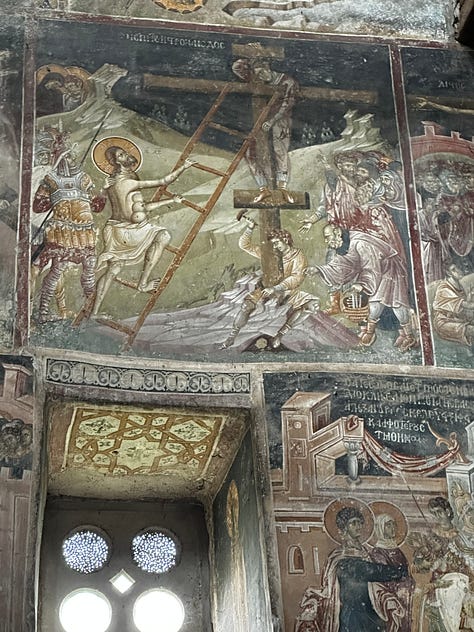
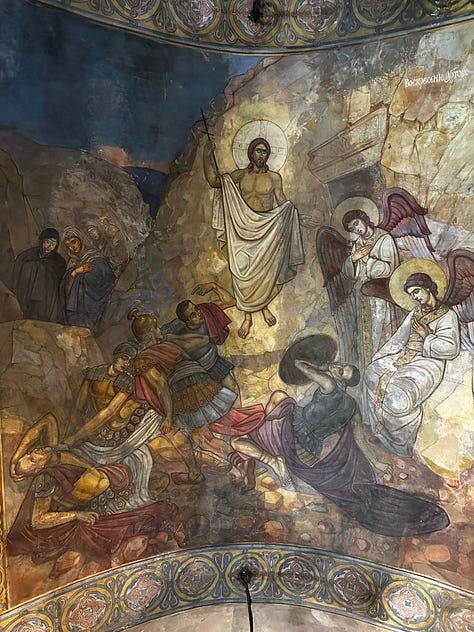
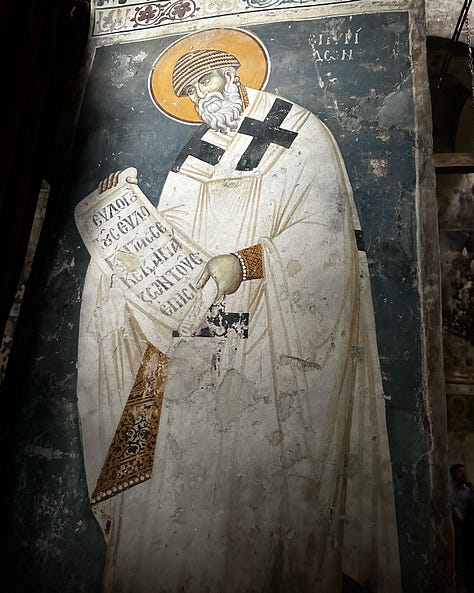
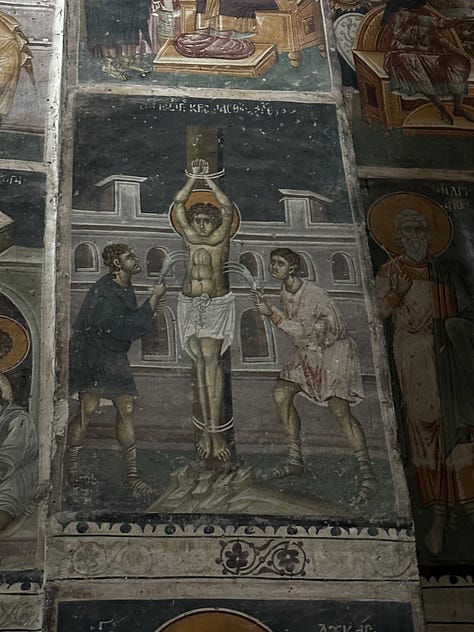
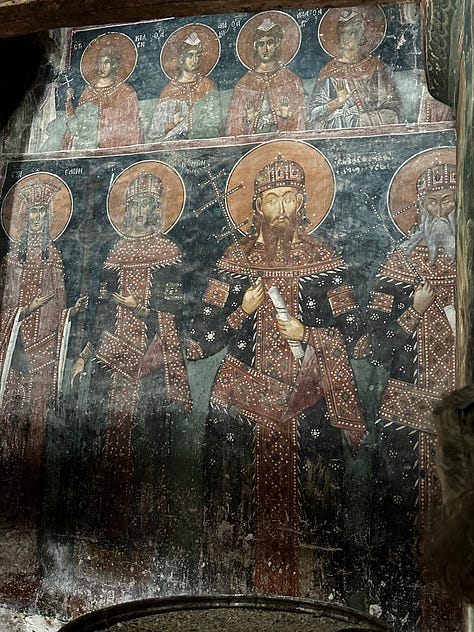
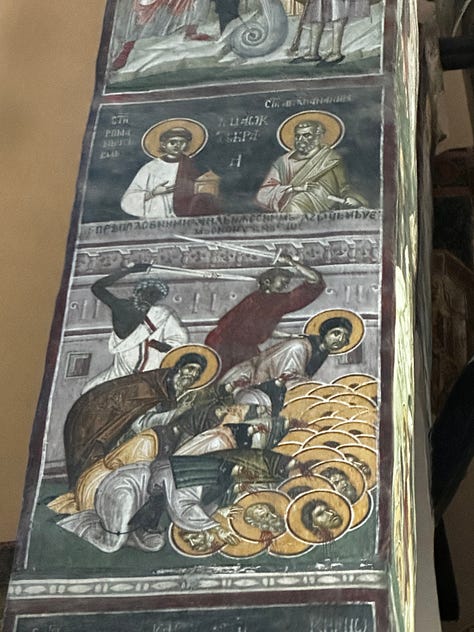
Central to everything in the architecture and art of these churches is the cross, the means by which Christ was victorious over death. The churches are built so that upon entering, the faithful are physically entering the form of the cross, a constant reminder that it is by this means that we are free from the bonds of sin and death, and we too are to lay down our earthly lives to gain that which Christ redeemed for us—eternal life in Him.
In most churches, much of the plaster and frescoes were damaged by vandals who, along with the invading armies of the Ottomans would desecrate the churches and deface the frescoed icons to keep the penetrating gaze of the Saints from converting them, a testament to the power of the presence of these icons and the ineffable presence of the saints and angels who participate in the worship being offered around each altar.
We did have the privilege of entering two places (Gracanica Monastery and Duchani Monastery) whose icons were nearly entirely intact, and what a powerful experience it was. It is both thrilling and humbling to see churches who have suffered attack and vandalism and realize that they stand in spite of it all, and we can still see the remnants of the frescoes. But to stand in a medieval church whose iconography is still intact, seeing what the all the generations before have seen and joining in witness with them, is a surreal and heavenly experience.
Without exception our eyes are all turned upward toward Christ at first. Pilgrims would stand quietly and ponder the images on the dome and the apse, and utterances of “Whoa, this is just…incredible!” would be made. Then there would be conversations of delightful discoveries. “Oh that is St. So-and-So! Doesn’t he just keep popping up everywhere I go?” and “I have never seen the crucifixion depicted that way—how powerful!” and, “Come here, I want to show you this Saint! He is known for his defense of the gospel at Nicaea…” In the times that we were not gazing at iconography and architecture, I enjoyed getting to know them and hearing their stories and sharing with them in their personal journeys.
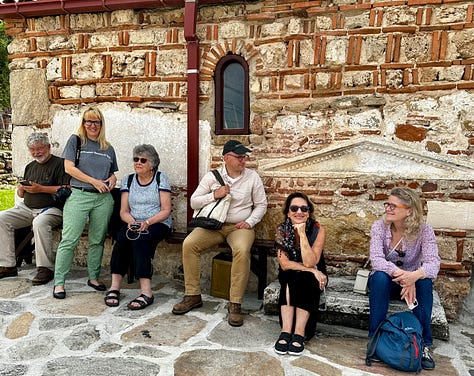
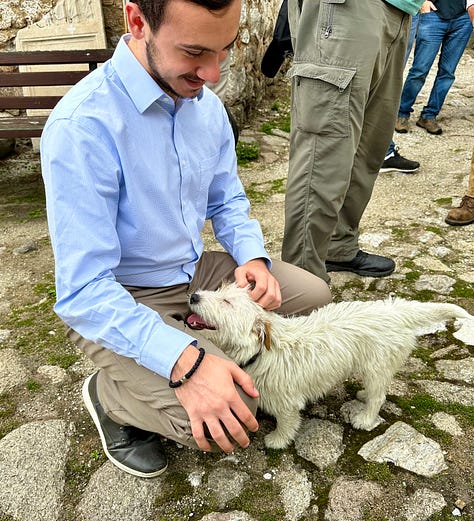
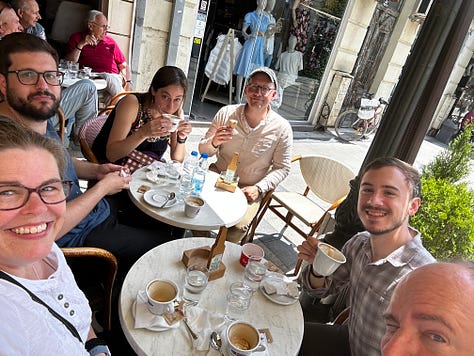

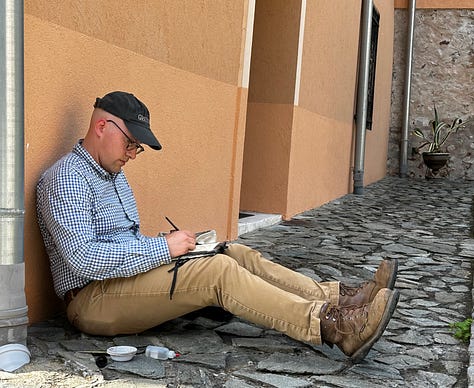
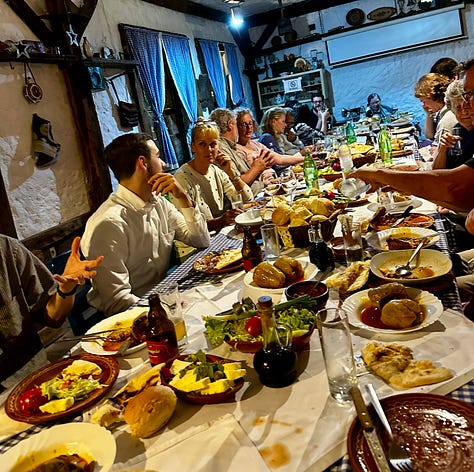
Each pilgrim came for a different reason. Each had a different encounter. But I believe it is safe to say that we all took something very special away from this trip, and the eyes of our hearts were opened wider to the truth of Christ, his Church, and how we as his body fit together. The fellowship was sweet. With the exception of four pilgrims we came from myriad Orthodox jurisdictions—Serbian, Greek, Russian, Antiochian, OCA…and it didn’t matter a bit (as it should be). It taught me the practical principle that Orthodoxy is just Orthodoxy, and as the faithful in Christ we are all brothers and sisters, regardless of our background. As Protestant converts we tend to think that these jurisdictions matter on doctrinal levels, which is a reasonable inclination given the hopeless fragmentation from which we came, but I quickly learned that this is not the case. Those who were not Orthodox were unequivocally accepted and appreciated and their perspectives added richness to the experience.
In essence we were joined with one motivation, and that was to see in person the beautiful liturgical art and architecture of the Balkans. Being raised in a Protestant environment where iconoclasm prevails and sacraments are just symbols, being immersed in a world where the physical church with its images, smells, sounds, and tastes all bear deep significance in worship, I am finally able to understand that my faith involves all of me, body and soul. This pilgrimage deepened my experience of this faith and my relationship with the Church which is no way “invisible,” but is here as “Thy kingdom come on earth as it is in heaven.”
Psalm 26:8-12 (KJV)
I have loved the habitation of Thy house, and the place where Thine honor dwelleth. Gather not my soul with sinners, nor my life with bloody men, in whose hands is mischief, and their right hand is full of bribes. But as for me, I will walk in mine integrity; redeem me and be merciful unto me.
My foot standeth on a level place; in the congregations will I bless the Lord.





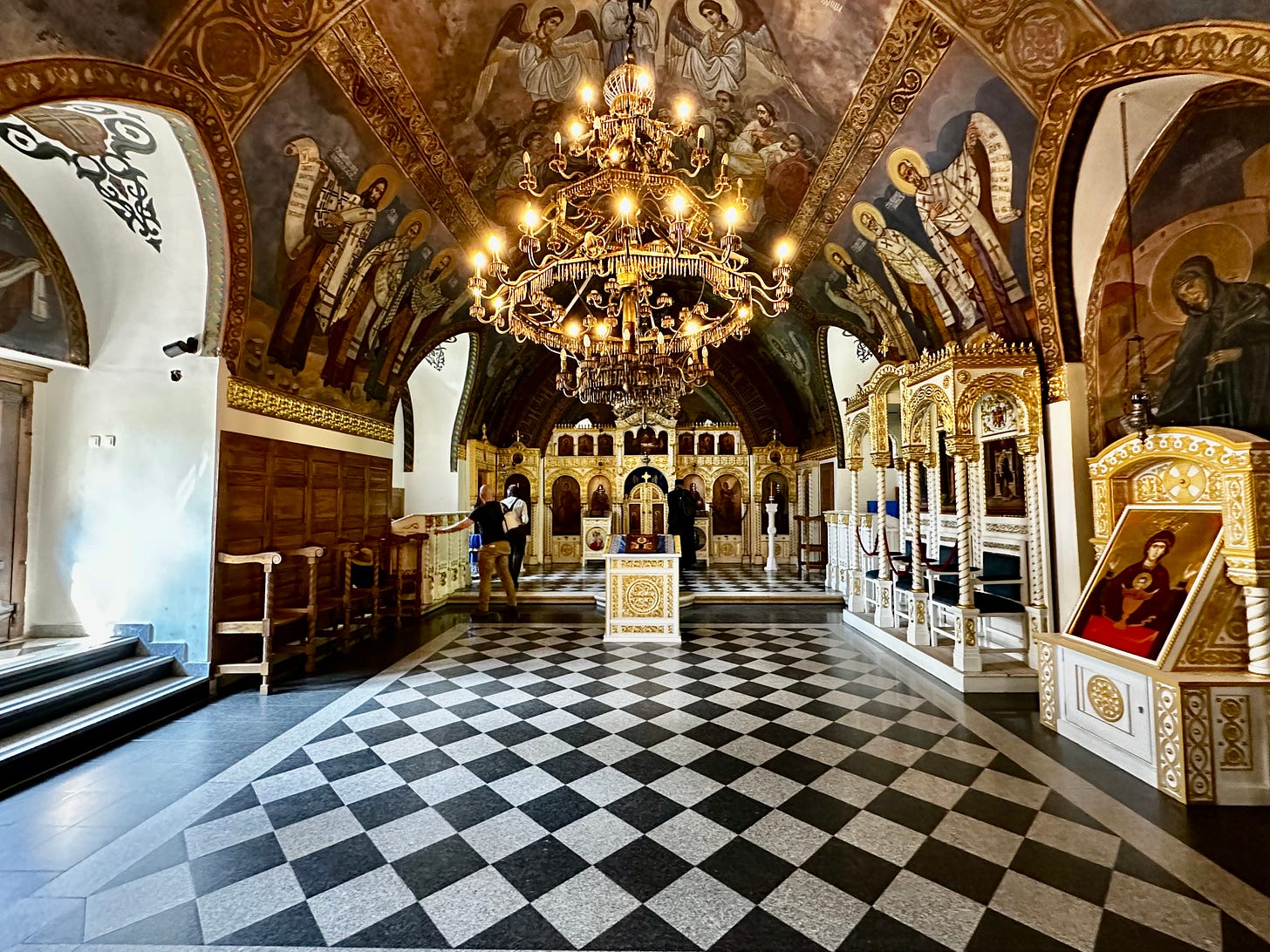
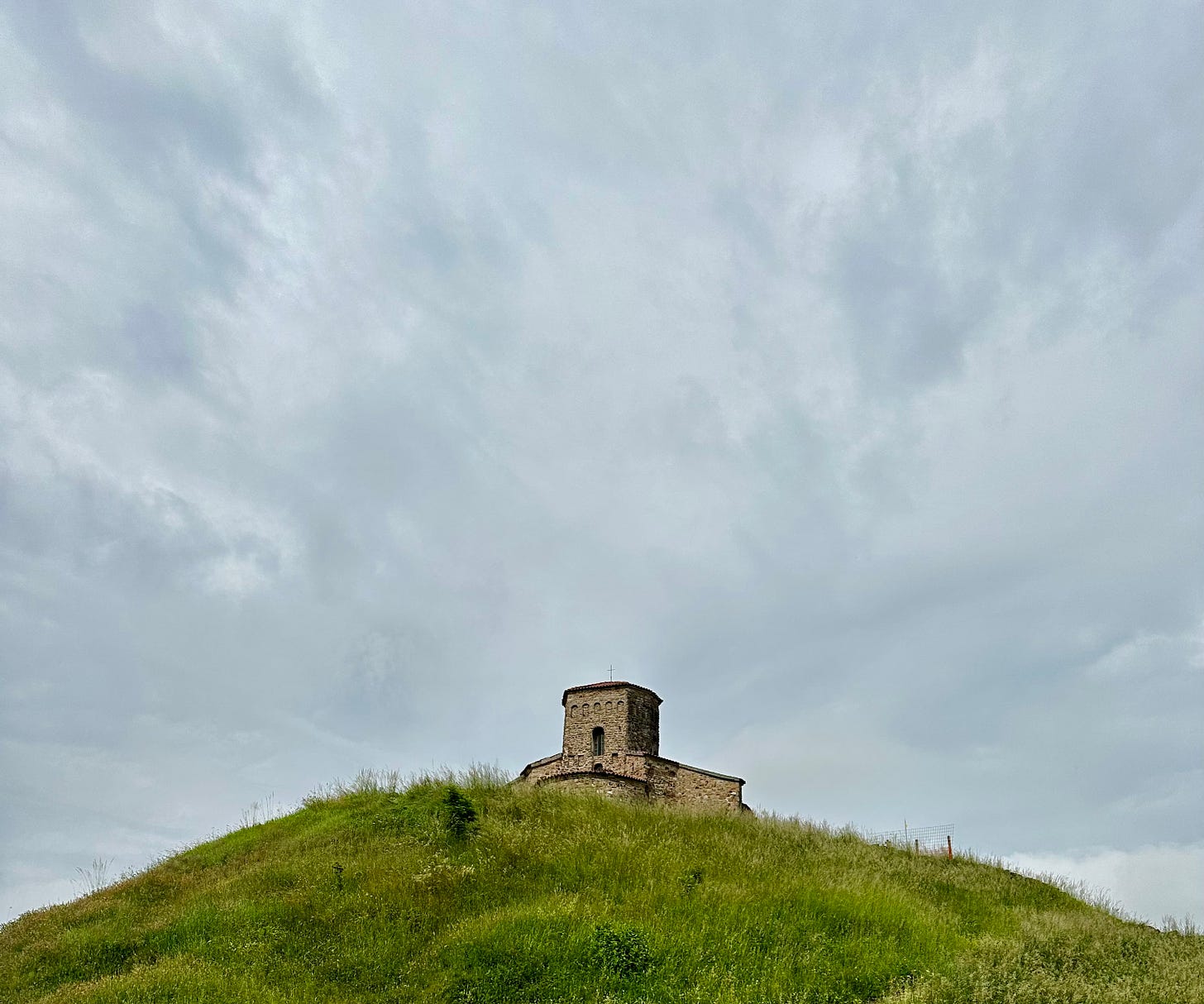
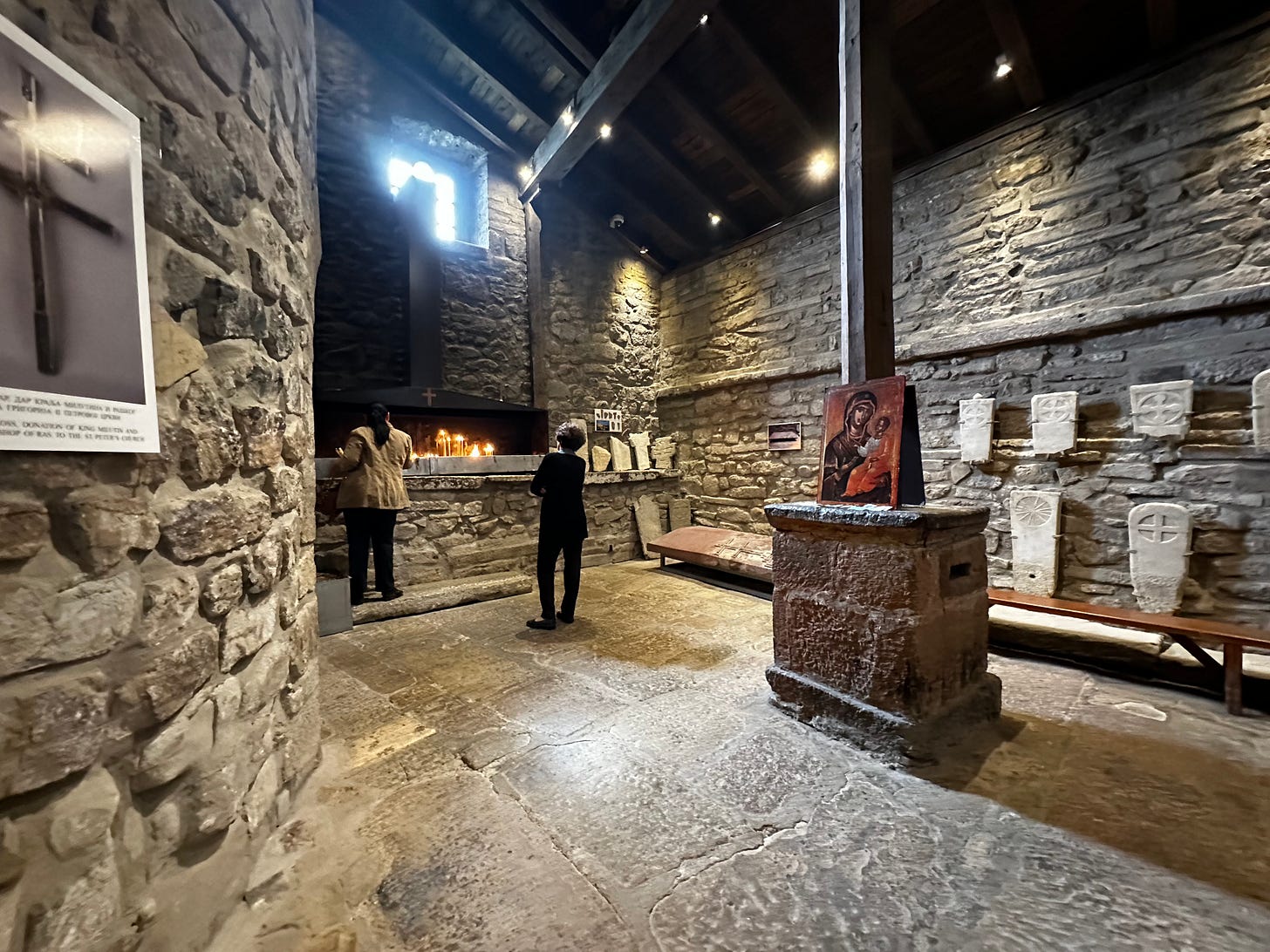

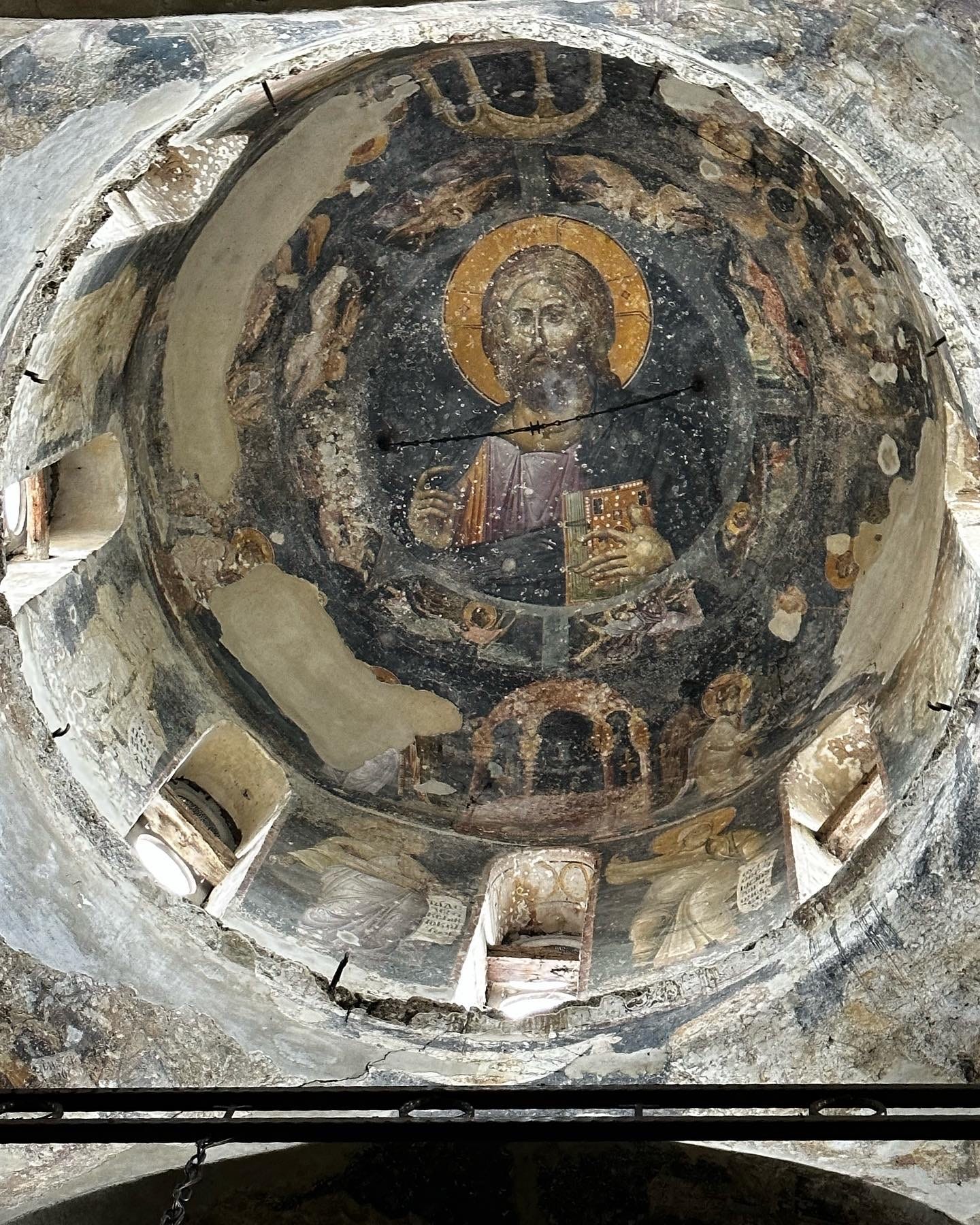


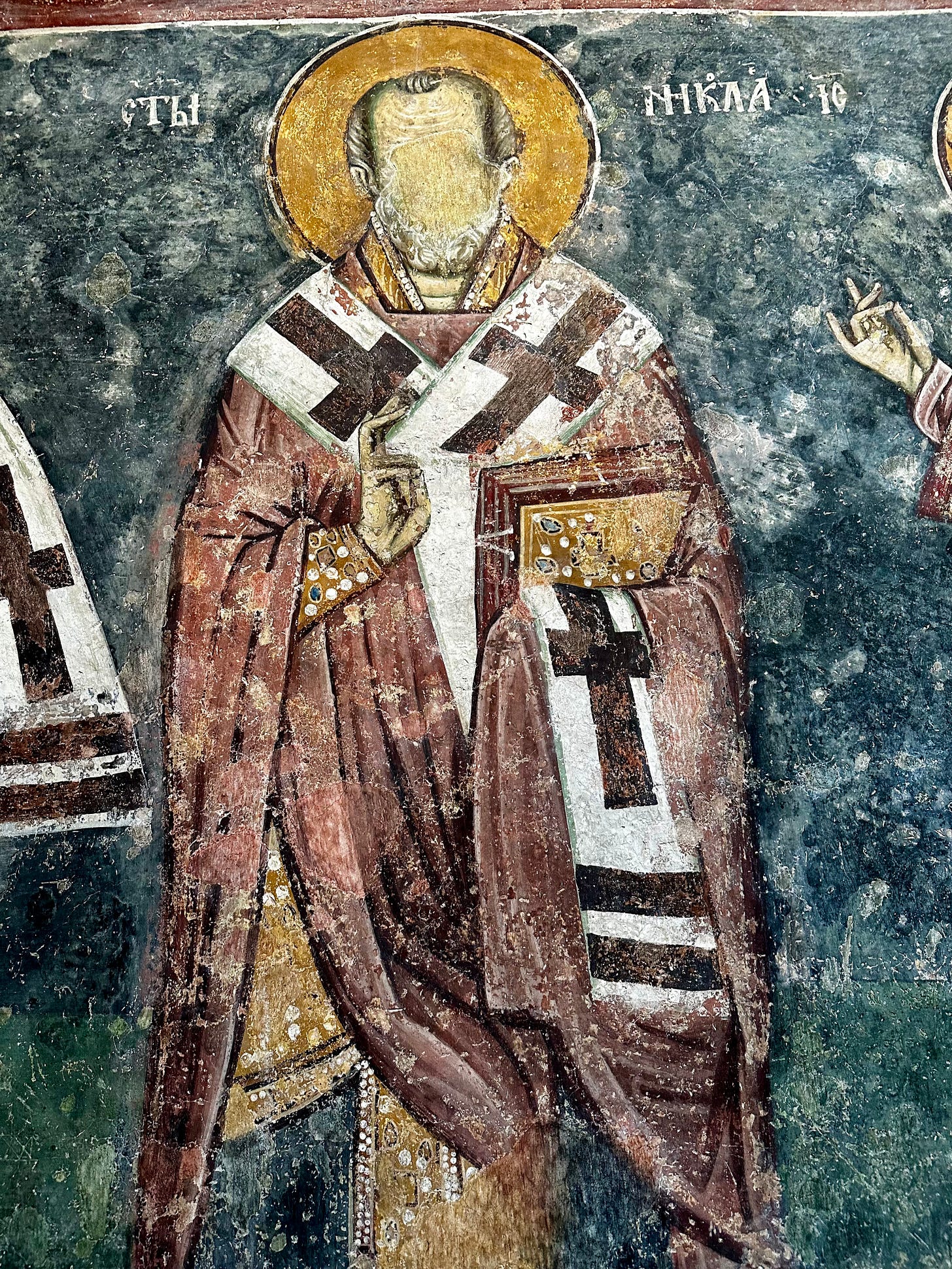

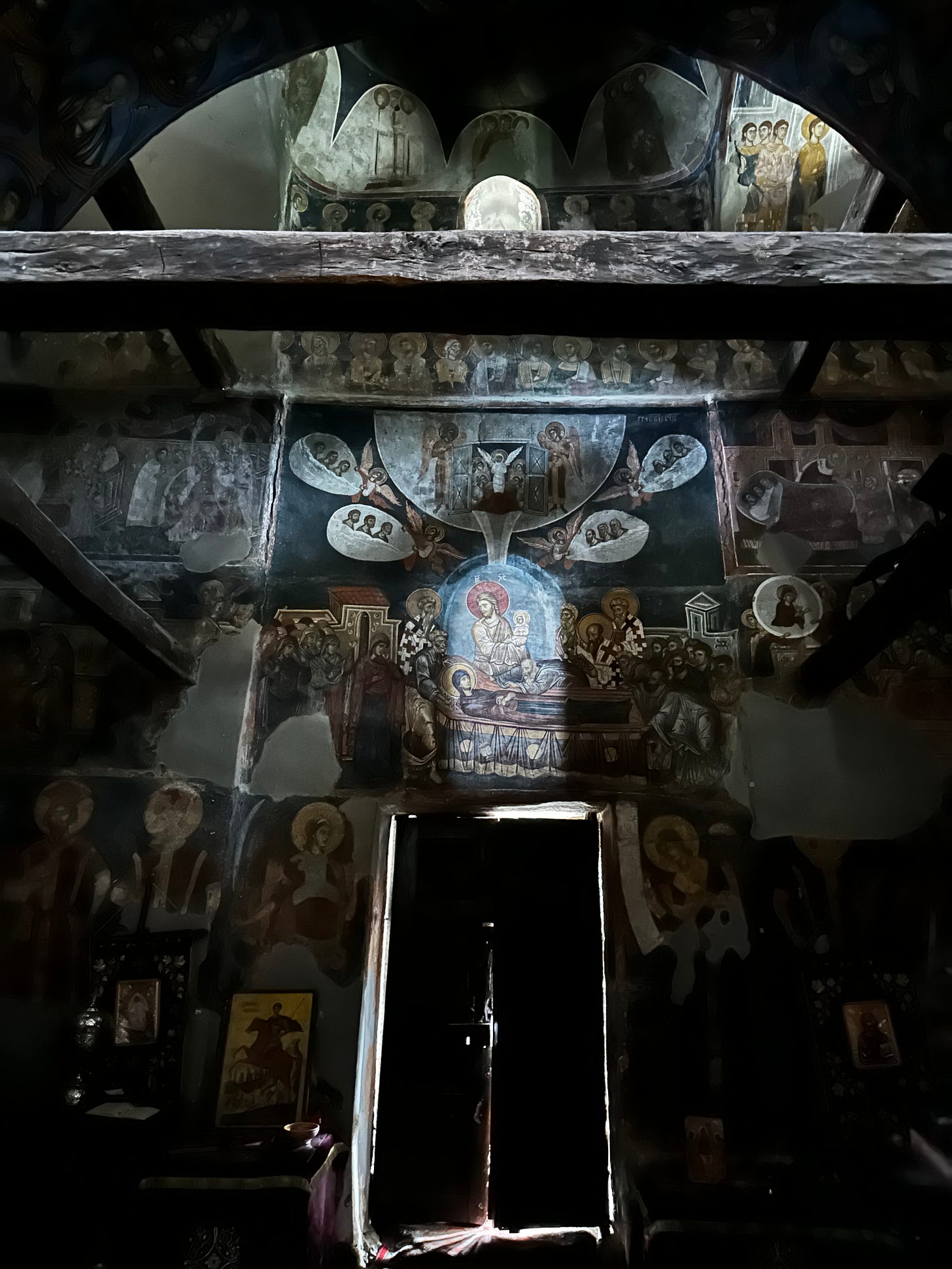
Thank you for sharing these gorgeous photos, Kelly!